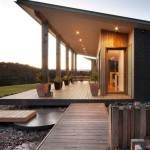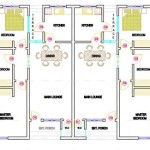House Plan 2000 Sq Ft In Kerala: Design Considerations and Common Features
Designing a house plan for a 2000 sq ft residence in Kerala requires careful consideration of the region's climate, cultural preferences, and evolving lifestyle needs. Kerala's unique environmental conditions, characterized by heavy rainfall and high humidity, significantly influence architectural choices. Furthermore, the traditional architectural elements deeply rooted in Kerala's heritage are often incorporated, albeit with modern adaptations, to create functional and aesthetically pleasing living spaces. This article elucidates the key features and design considerations essential for creating a well-planned 2000 sq ft house in Kerala.
The tropical climate of Kerala necessitates specific design strategies to ensure optimal comfort and energy efficiency. Natural ventilation, shading, and the use of locally sourced materials are paramount. Cross-ventilation, achieved through strategically placed windows and ventilators, facilitates airflow and reduces dependence on artificial cooling systems. Overhanging eaves and verandas provide shade, minimizing direct sunlight exposure to the walls and windows, thereby reducing heat gain. The selection of building materials, such as laterite stone or clay bricks, which possess good thermal mass, contributes to maintaining a stable indoor temperature.
Kerala's architectural heritage is rich in traditional elements, which are often integrated into contemporary house designs. These elements include sloping roofs, courtyards (nadumuttam), and intricate woodwork. Sloping roofs are particularly effective in shedding rainwater quickly, preventing waterlogging and potential damage to the structure. Courtyards provide natural light and ventilation, creating a serene and inviting atmosphere. Traditional woodwork, often seen in doors, windows, and pillars, adds a touch of elegance and cultural authenticity to the house.
Optimizing Space and Functionality
A well-designed house plan maximizes the use of available space and caters to the specific needs of the occupants. In a 2000 sq ft house, careful planning is crucial to create a harmonious balance between different functional areas, such as living, dining, bedrooms, kitchen, and utility spaces. Open floor plans, which combine the living and dining areas, are increasingly popular as they create a sense of spaciousness and facilitate social interaction. The placement of bedrooms should ensure privacy and tranquility, while the kitchen should be designed for efficiency and ease of use.
Storage is another critical aspect to consider. Adequate storage space is essential for maintaining a clutter-free and organized living environment. Built-in wardrobes in bedrooms, kitchen cabinets, and storage areas under staircases can effectively utilize available space. Vertical storage solutions, such as wall-mounted shelves and cabinets, can also help to maximize space utilization, especially in smaller rooms.
The orientation of the house on the plot significantly impacts the amount of sunlight it receives and the effectiveness of natural ventilation. Ideally, the house should be oriented in a way that minimizes direct sunlight exposure during the hottest parts of the day, particularly on the west-facing walls. This can be achieved by strategically positioning the house on the plot and incorporating shading devices, such as trees, pergolas, or external blinds.
Incorporating Traditional Elements with Modern Aesthetics
Modern house designs in Kerala often blend traditional architectural elements with contemporary aesthetics to create a unique and appealing style. This fusion of styles allows homeowners to enjoy the benefits of traditional design principles while embracing modern conveniences and design trends. For instance, a house might feature a traditional sloping roof combined with large glass windows to maximize natural light and create a modern look. Similarly, a courtyard can be incorporated into a modern house plan, providing a tranquil oasis in the heart of the home.
The choice of materials and finishes also plays a crucial role in achieving a harmonious blend of traditional and modern aesthetics. Locally sourced materials, such as laterite stone, clay tiles, and wood, can be used to create a sense of authenticity and connection to the region's heritage. These materials can be combined with modern materials, such as glass, steel, and concrete, to create a visually appealing and durable structure. The color palette should also be carefully considered to complement the overall design aesthetic. Earthy tones, such as browns, greens, and beiges, are often used to evoke a sense of warmth and connection to nature.
Landscaping is an integral part of the overall design, enhancing the aesthetic appeal of the house and creating a welcoming outdoor space. Traditional Kerala gardens often feature lush greenery, flowering plants, and water features. These elements can be incorporated into the landscape design to create a serene and inviting outdoor environment. The use of native plants is encouraged as they are well-suited to the local climate and require less maintenance.
Key Design Considerations for Climate and Sustainability
The climate of Kerala necessitates a strong focus on sustainable design principles to ensure the long-term environmental sustainability and energy efficiency of the house. Sustainable design strategies include rainwater harvesting, solar energy utilization, and waste management. Rainwater harvesting systems can be installed to collect rainwater from the roof and store it for later use, reducing dependence on municipal water supply. Solar panels can be installed on the roof to generate electricity, reducing reliance on fossil fuels and lowering energy bills.
Proper insulation is essential for maintaining a comfortable indoor temperature and reducing energy consumption. Insulation can be installed in the walls, roof, and floors to minimize heat transfer and maintain a stable indoor temperature. The use of energy-efficient windows and doors is also crucial for reducing heat loss and gain. Double-glazed windows, which consist of two panes of glass separated by a layer of air or gas, provide superior insulation compared to single-pane windows.
Waste management is another important aspect of sustainable design. Composting systems can be used to recycle organic waste, reducing the amount of waste sent to landfills. Greywater recycling systems can be installed to reuse water from showers, sinks, and washing machines for irrigation or toilet flushing. By implementing these sustainable design strategies, homeowners can significantly reduce their environmental impact and create a more sustainable living environment.
The design of a 2000 sq ft house plan in Kerala requires a holistic approach that considers the region's climate, cultural preferences, and evolving lifestyle needs. By incorporating traditional architectural elements with modern aesthetics, optimizing space and functionality, and embracing sustainable design principles, homeowners can create a comfortable, aesthetically pleasing, and environmentally responsible living space.
The layout of the house should be thoughtfully planned to ensure smooth circulation and connectivity between different areas. The entrance should be welcoming and inviting, leading into a spacious living area. The dining area should be conveniently located near the kitchen, facilitating easy meal service. The bedrooms should be located away from the main living areas to ensure privacy and tranquility. The kitchen should be designed for efficiency, with ample counter space, storage, and ventilation. The bathrooms should be well-ventilated and equipped with modern fixtures.
In conclusion, planning a 2000 sq ft house in Kerala is a multifaceted process requiring meticulous attention to various factors. Prioritizing climate-responsive design, embracing traditional Kerala architecture, and integrating modern amenities can result in a dwelling that is both functional and aesthetically pleasing. Proper management of space, inclusion of green spaces, and selection of energy-efficient materials further enhance the overall quality of the house. By thoughtfully addressing these considerations, homeowners can create a living space that reflects their unique needs and preferences, while also harmonizing with the surrounding environment.

2000 Square Feet House Plan And Elevation Architecture Kerala Plans Free

Modern House Plan 2000 Sq Ft N Plans Kerala Design

2000 Sq Ft House Plans Kerala 2 Story Sqft Home Double Hav Two

Floor Plan Of 2000 Sq Ft House In 6 5 Cent Land Interior Courtyard Plans N 20x40

2000 Sq Ft House Plans Kerala 60 Small Two Story Floor Construction Plan Design

2000 Sq Ft Flat Roof Home Plan With 4 Bedrooms Kerala Design And Floor Plans 9k Dream Houses

Kerala Home 2000 Sq Feet Contemporary Villa Plan And Elevation

Awesome 4 Bedroom 2000 Sq Ft Contemporary Style House Kerala Home Design And Floor Plans 9k Dream Houses

David Lucado 2000 Square Feet Kerala Model Home

Five Bedroom Kerala Style Two Y House Plans Under 3000 Sq Ft 4 Small Hub








